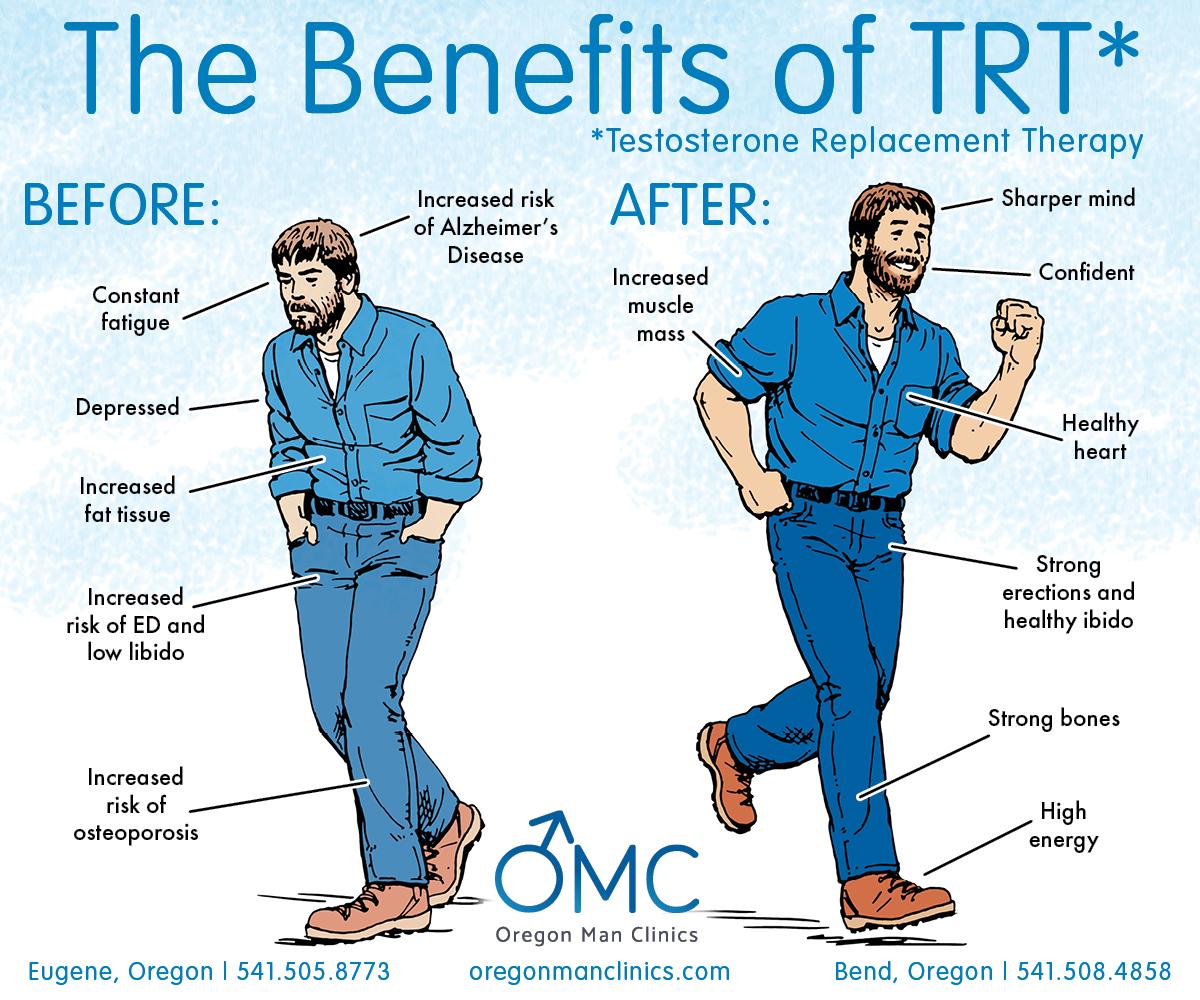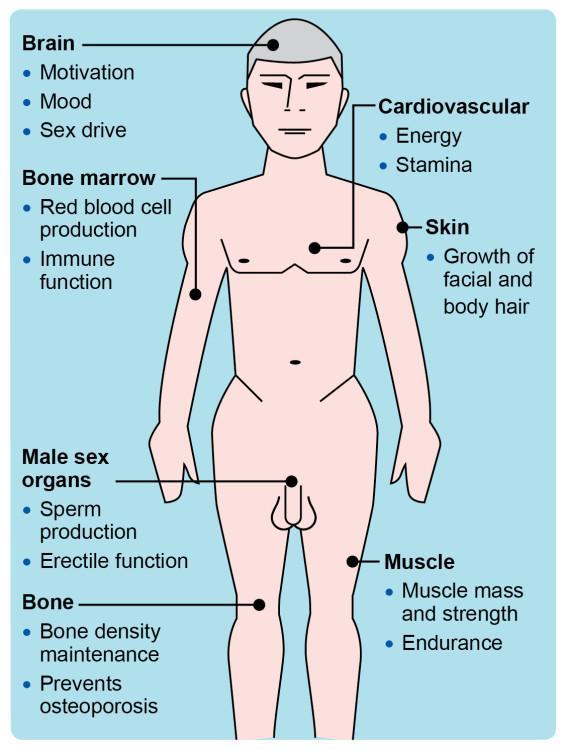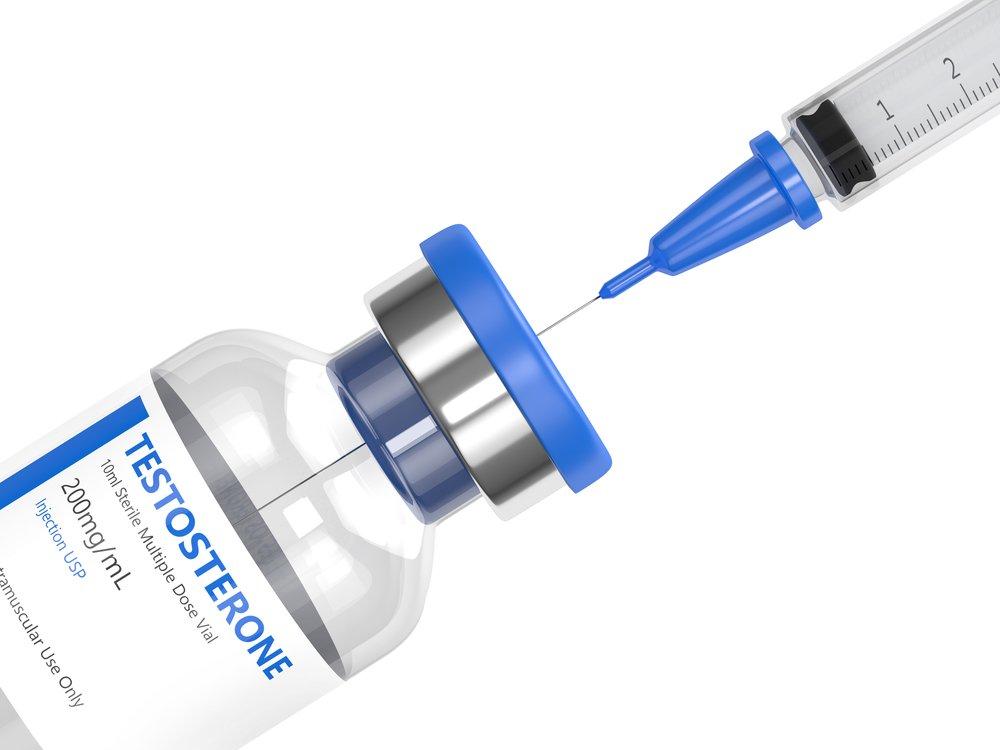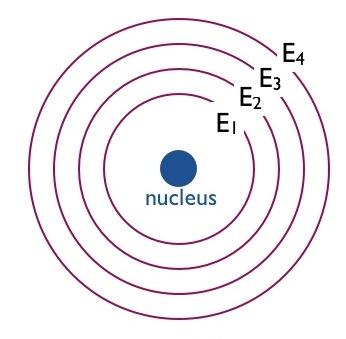In the quest for vitality, many of us find ourselves grappling with fluctuations in energy levels that can leave us feeling drained and unmotivated. As we navigate the complexities of modern life, the search for effective solutions often leads us to explore the role of hormones—specifically testosterone. Once relegated to conversations centered around muscle mass and masculinity, testosterone therapy has emerged as a topic of growing interest for both men and women seeking to reclaim a sense of vigor. This article delves into the intricacies of testosterone therapy, examining its potential impact on energy levels, the underlying science, and the considerations that come with embarking on such a journey. Join us as we unpack the benefits, risks, and realities of this therapy, guiding you toward informed decisions on your path to renewed vitality.
Understanding Testosterone and Its Role in Energy Levels
Testosterone is a powerful hormone primarily associated with male characteristics but also plays a critical role in various bodily functions for all genders. It helps regulate muscle mass, fat distribution, and energy levels. When testosterone levels are optimal, individuals often experience increased energy, improved mood, and enhanced cognitive function. Conversely, low testosterone can lead to fatigue, decreased motivation, and even depression, creating a cycle that can significantly impair one’s quality of life. Recognizing the signs of low testosterone and understanding its contribution to energy levels can be vital for long-term wellness.
Incorporating testosterone therapy as a means to boost energy levels has gained popularity in recent years. Many individuals report substantial benefits, making it a consideration for those experiencing fatigue linked to hormone deficiencies. However, the decision to pursue therapy should be made cautiously and ideally under medical supervision, taking into account individual health profiles and potential risks. Here are some benefits of testosterone therapy:
- Increased energy and vitality
- Enhanced mental clarity and focus
- Improved physical performance
- Better mood regulation
While testosterone therapy can provide substantial energy benefits, it’s important to acknowledge that it’s not a one-size-fits-all solution. Factors such as age, lifestyle, and overall health play critical roles in how effective the therapy may be for an individual. A personalized approach often yields the best outcomes, allowing for monitoring and adjustments based on progress and any arising side effects. To provide a clearer view, here’s a simple comparison of common testosterone therapy methods:
| Method | Application | Frequency |
|---|---|---|
| Injections | Intramuscular injection | Every 2-4 weeks |
| Patches | Applied to the skin | Daily |
| Gels | Topical application | Daily |
| Pellets | Surgically implanted | Every 3-6 months |

Recognizing Symptoms of Low Testosterone and Energy Deficits
Identifying low testosterone levels can be crucial for addressing energy deficits that affect daily life. Common symptoms may include a significant decline in energy, coupled with persistent fatigue, even after a full night’s sleep. Individuals might also notice reductions in motivation, difficulty with concentration, and a general sense of lethargy that permeates daily activities. Alongside these cognitive symptoms, physical manifestations such as decreased muscle mass or increased body fat can signal hormonal imbalances. These changes often reflect a complex interplay of physical and mental health that requires attention.
It is essential to monitor not only the physical symptoms but also emotional well-being. Many people experiencing low testosterone report feelings of irritability, anxiety, or mood swings that seem disproportionate to life’s stressors. Changes in sexual function, including reduced libido or erectile dysfunction, can also act as indicators of low testosterone levels. If you’re recognizing several of these signs, keeping a detailed record can aid discussions with healthcare professionals. Consider the following as potential indicators of testosterone deficiency:
- Chronic fatigue
- Loss of muscle strength
- Unexplained weight gain
- Decreased bone density
- Changes in sleep patterns
- Reduced enthusiasm for daily activities

Exploring the Different Types of Testosterone Therapy
Testosterone therapy encompasses a variety of methods designed to help individuals struggling with low energy levels due to hormonal imbalances. These therapies can be categorized into several types, each with its own unique delivery system and efficacy. The most common options include:
- Injectable Testosterone: Administered through intramuscular or subcutaneous injections, typically on a prescribed schedule.
- Transdermal Patches: Adhesive patches that release testosterone into the bloodstream through the skin, providing a steady dose throughout the day.
- Testosterone Gels: A topical solution that is applied daily, allowing for a controlled absorption rate of the hormone.
- Pellet Therapy: Small pellets are implanted under the skin, slowly releasing testosterone over an extended period.
Choosing the right type of therapy is crucial for maximizing the benefits and minimizing potential side effects. Factors such as lifestyle, personal preference, and medical history play a significant role in this decision. Below is a simple comparison of the different methods:
| Method | Administration Frequency | Benefits | Potential Side Effects |
|---|---|---|---|
| Injectable Testosterone | Every 1-3 weeks | Fast-acting, controlled dosage | Pain at injection site, mood swings |
| Transdermal Patches | Daily | Steady release, easy to use | Skin irritation, allergic reactions |
| Testosterone Gels | Daily | Non-invasive, flexible application | Transfer risk to others, skin reactions |
| Pellet Therapy | Every 3-6 months | Long-lasting effects, minimal maintenance | Infection at insertion site, fluctuation of hormone levels |

Assessing the Benefits of Testosterone Therapy for Energy Enhancement
Testosterone therapy has gained popularity as a potential remedy for men and women seeking to improve their energy levels. Many individuals report a noticeable boost in vitality and overall wellness after beginning treatment. This enhancement in energy can often be attributed to the role testosterone plays in various bodily functions, including metabolism, muscle mass maintenance, and emotional well-being. Key benefits include:
- Increased Stamina: Many therapy recipients note substantial improvements in their physical endurance, enabling them to tackle daily tasks with newfound vigor.
- Improved Mood: Higher testosterone levels are often linked to better mood regulation, reducing feelings of fatigue and lethargy.
- Enhanced Motivation: A notable boost in energy can invigorate one’s drive to engage in physical activities and pursue personal goals.
The effectiveness of testosterone therapy can vary among individuals, but understanding its potential benefits is crucial for those considering this treatment. Factors such as age, baseline hormone levels, and physical health conditions influence outcomes significantly. An assessment may include:
| Factor | Impact on Energy |
|---|---|
| Age | Declining testosterone levels may lead to reduced energy. |
| Exercise Routine | Active individuals may experience more pronounced benefits. |
| Health Conditions | Conditions like obesity may hinder therapy effectiveness. |
Navigating the Risks and Side Effects of Treatment
When considering testosterone therapy as a solution for boosting energy levels, it’s crucial to be aware of potential risks and side effects. First and foremost, individuals may encounter cardiovascular issues, particularly if there is a pre-existing condition. This can manifest as an increased risk of hypertension, heart attacks, or strokes. Furthermore, some might experience changes in mood, leading to symptoms like irritability or anxiety. Other common side effects include:
- Weight gain due to increased fat retention
- Sleep apnea, which can impact overall rest and recovery
- Acne or increased oiliness of the skin
Additionally, men’s fertility can face challenges, as testosterone therapy may lower sperm production. It’s also worth noting the potential for increased estrogen levels, which can cause gynecomastia (enlarged breast tissue in men). Regular monitoring is essential to mitigate these risks. The table below highlights the importance of discussing personal health history and symptoms with a healthcare provider before starting treatment.
| Discussion Points | Importance |
|---|---|
| Cardiovascular health | Assess risks of heart-related issues |
| Mood and mental health | Identify any pre-existing conditions |
| Current medications | Avoid potential interactions |
Incorporating Lifestyle Changes to Maximize Energy and Therapy Efficacy
Integrating subtle lifestyle modifications can significantly enhance the potential benefits of testosterone therapy, leading to improved energy levels and overall well-being. Prioritizing a balanced diet filled with essential nutrients can create a favorable environment for your body’s hormonal fluctuations. Foods rich in zinc (such as oysters and lean meats) and vitamin D (like fatty fish and fortified dairy) can support testosterone production. Additionally, maintaining adequate hydration is crucial. Water consumption impacts energy levels and optimizes cellular functions, ensuring your body operates at its best.
Regular physical activity is another cornerstone of maximizing the efficacy of testosterone therapy. Crafting a routine that includes a mix of strength training and aerobic exercises generates a dual benefit: it boosts natural testosterone levels and enhances overall energy. Consider the following strategies:
- Engage in strength training at least twice a week to stimulate hormone production.
- Incorporate high-intensity interval training (HIIT) to elevate cardiovascular health and promote fat loss.
- Prioritize sleep hygiene by developing a consistent sleep schedule and creating a restful environment.
| Activity | Benefit |
|---|---|
| Strength Training | Boosts testosterone levels |
| HIIT Workouts | Enhances fat loss and stamina |
| Quality Sleep | Supports hormonal balance |
Consultation and Monitoring: Ensuring Safe and Effective Treatment
When considering testosterone therapy, it’s crucial to engage in thorough consultations with healthcare professionals. These discussions should cover your medical history, lifestyle factors, and specific energy-related challenges. A personalized assessment may include:
- Blood tests to measure hormone levels
- Physical examinations to evaluate overall health
- Symptom analysis to understand energy dips
This comprehensive approach ensures that the therapy is tailored to your individual needs. Regular monitoring is equally important to track the progress and efficacy of the treatment. By scheduling follow-up appointments, you can:
- Adjust dosages based on hormone level changes
- Identify side effects early on
- Modify lifestyle recommendations as needed
Ensuring a robust monitoring plan not only helps in maximizing the benefits of testosterone therapy but also in maintaining your safety and well-being throughout the treatment process.
Q&A
Q&A: Testosterone Therapy for Energy Levels
Q1: What is testosterone therapy, and how is it related to energy levels?
A1: Testosterone therapy involves the administration of testosterone, a vital hormone in the body, typically to treat low testosterone levels, or hypogonadism. Low testosterone can lead to fatigue, decreased motivation, and reduced physical performance. By restoring testosterone levels to a normal range, individuals may experience improved energy levels and overall vitality.
Q2: Who might benefit from testosterone therapy in terms of energy?
A2: Testosterone therapy can be particularly beneficial for men (and some women) experiencing symptoms of low testosterone, such as chronic fatigue, diminished stamina, and lack of enthusiasm for daily activities. It is important for individuals experiencing these symptoms to seek medical consultation to determine if hormone levels are indeed the cause.
Q3: Are there any potential side effects associated with testosterone therapy?
A3: Yes, testosterone therapy can come with a range of potential side effects. Common issues include mood swings, acne, sleep apnea, and an increased risk of cardiovascular problems. Additionally, it’s crucial to monitor hormone levels regularly, as excessive testosterone can lead to serious health complications. Always discuss these risks with a healthcare provider before starting therapy.
Q4: What should someone expect during the process of starting testosterone therapy?
A4: Starting testosterone therapy typically involves an initial consultation, where a healthcare professional will examine symptoms and order blood tests to assess hormone levels. If low testosterone is confirmed, treatment options such as injections, patches, or gels will be discussed. Regular follow-up appointments will help monitor hormone levels and adjust dosage, ensuring the most effective and safe treatment.
Q5: Can lifestyle changes also improve energy levels alongside testosterone therapy?
A5: Absolutely! While testosterone therapy can help those with low levels, lifestyle factors play a significant role in energy levels. Regular exercise, a balanced diet, adequate sleep, and stress management can all contribute to enhanced energy and overall well-being. Combining lifestyle changes with hormone therapy can lead to a synergistic effect, maximizing benefits.
Q6: Is testosterone therapy a long-term solution for energy issues?
A6: The long-term efficacy of testosterone therapy can vary based on the individual. While many experience sustained benefits, others may find that their symptoms return over time or that they develop side effects. Continuous dialogue with healthcare providers is crucial to reassess the need for ongoing therapy and any adjustments that may be necessary.
Q7: How does one determine if they are a candidate for testosterone therapy?
A7: A healthcare provider will consider a combination of factors, primarily your symptoms and blood test results showing testosterone levels. A detailed discussion about medical history, current health issues, and lifestyle factors will help in determining whether testosterone therapy could be a suitable approach to improving your energy levels.
Q8: What is the key takeaway regarding testosterone therapy and energy levels?
A8: Testosterone therapy could potentially offer significant relief for those suffering from low testosterone-related fatigue. However, it’s vital to approach it thoughtfully, with a healthcare provider’s guidance, and in conjunction with a healthy lifestyle to truly enhance energy levels and improve quality of life.
In Conclusion
As we navigate the intricate landscape of health and wellness, it becomes increasingly clear that our energy levels play a pivotal role in shaping our daily lives. Testosterone therapy, while often surrounded by both enthusiasm and skepticism, offers a potential pathway for those grappling with fatigue and low vitality. However, the journey towards rejuvenation is not one-size-fits-all; it requires careful consideration of individual needs, lifestyle factors, and medical guidance.
while testosterone therapy can provide a boost in energy for some, it is essential to approach this option with a discerning eye. Consulting healthcare professionals, exploring holistic practices, and embracing a balanced lifestyle can be equally vital in reclaiming your vigor. Ultimately, the quest for sustained energy is not merely about hormonal levels but about harmonizing body and mind, ensuring a revitalized and fulfilling life. As you ponder the possibilities ahead, remember that the path to wellness is uniquely yours to chart.










